Tadasana, Mountain pose or Samasthiti is a standing asana in modern yoga as exercise; it is not described in medieval hatha yoga texts. It is the basis for several other standing asanas.

Seioptera vibrans is a species of ulidiid or picture-winged fly in the genus Seioptera of the family Ulidiidae.
Armillaria fumosa is a species of mushroom in the family Physalacriaceae. This species is found in Australia.

Gastropila fumosa is a species of puffball in the family Agaricaceae. It was first described as Calvatia fumosa by American mycologist Sanford Myron Zeller in 1947, and later transferred to Gastropila in 1976. Some authors place it instead in the genus Handkea, circumscribed by Hanns Kreisel in 1989.

Psila fimetaria is a species of fly, a member of the family Psilidae.
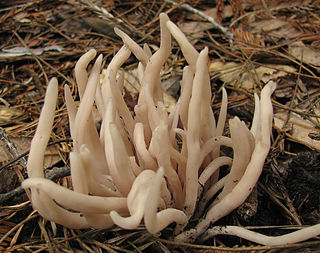
Clavaria fumosa, commonly known as the grayish fairy club, smoky clavaria or smoky spindles, is a species of coral fungus in the family Clavariaceae. It was originally described by Christian Hendrik Persoon in 1795.

Loxocera aristata is a species of fly and member of the family Psilidae.

Chaoborus flavicans is a species of fly in the family Chaoboridae. It is found in the Palearctic.

Chironomus anthracinus is a species of fly in the family Chironomidae. It is found in the Palearctic.
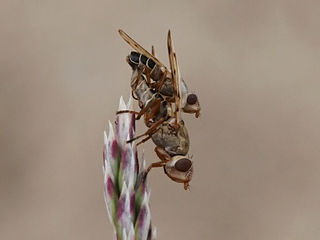
Tetanops myopina is a species of fly in the family Ulidiidae. It is found in the Palearctic. On the bulky wedge-shaped head the orbits have a large posterior macrochaete.The antennae are reddish. The body is transparent red covered in a dense grey white.The abdomen is gloss black, partially covered white in bands and a stripe, more so in the female. There are two pairs of prescutellar acrosticals and one pair of posterior dorsocentrals. The legs are entirely reddish. Long. : 5-7 mm.

Agromyza nigripes is a species of fly in the family Agromyzidae. It is found in the Palearctic. The body is black. The thorax and abdomen are shiny. There are 1 + 4 dorsocentral bristles and 7 rows of acrostical bristles. The wing veins are brown, yellow at the base. Long. : 2–3,5 mm. The larva makes serpentine mines in Medicago sativa leaves.
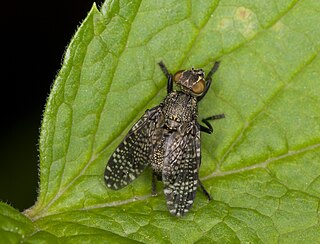
Platystoma seminationis, the dancing "kiss fly", is a species of fly in the family Platystomatidae.
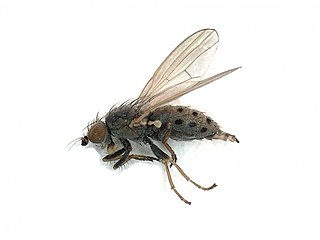
Chamaemyia flavipalpis is a species of fly in the family Chamaemyiidae. It is found in the Palearctic. and North Africa.

Minettia inusta is a species of fly in the family Lauxaniidae. It is found in the Palearctic.

Sapromyza quadripunctata is a species of fly in the family Lauxaniidae. It is found in the Palearctic.
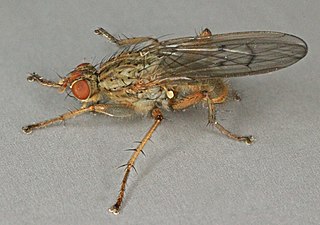
Scathophaga furcata is a species of fly in the family Scathophagidae. It is found in the Palearctic.
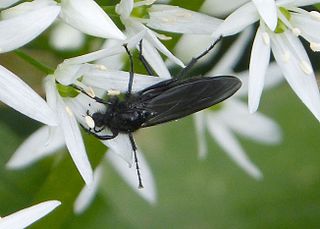
Dilophus febrilis is a species of feverfly the family Bibionidae. It is found in the Palearctic.
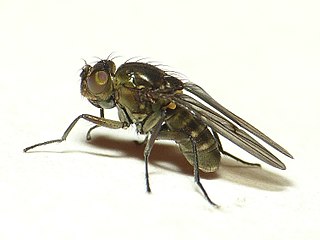
Paracoenia fumosa is a species of fly in the family Ephydridae. It is found in the Palearctic. Jizz Nervure Rf with 1–3 hairs. Abdomen: tergites with transverse grey green bands. Long. : 3,5 mm. May to October. By ponds.

Ptychoptera albimana is a species of fly in the family Ptychopteridae. It can be found throughout the Palearctic but commonly found throughout Britain.

Renocera stroblii is a species of fly in the family Sciomyzidae. It is found in the Palearctic



















